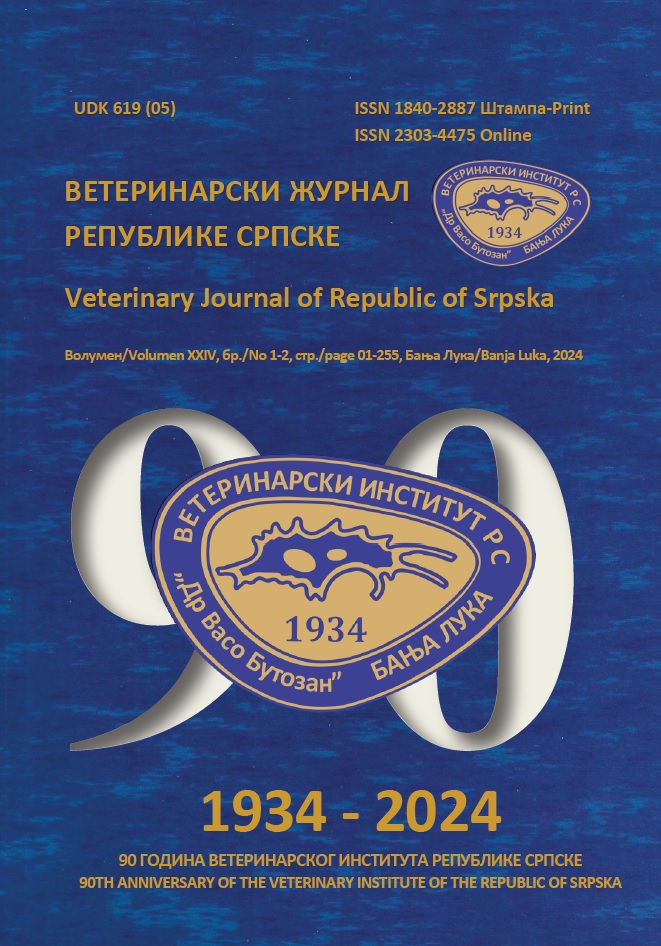CLINICAL ENDOMETRITIS IN COWS: CORRELATION OF BODY CONDITION, QUALITY OF VAGINAL MUCUS, LACTATION, DAILY MILK PRODUCTION AND THE PERCENTAGE OF POLYMORPHONUCLEAR CELLS IN THE CYTOLOGICAL SMEAR OF THE ENDOMETRIUM
DOI:
https://doi.org/10.7251/VETJEN2401063MAbstract
This study aimed to determine the correlation between body condition score, production parameters (lactation and daily milk production), vaginal mucus quality and the percentage of polymorphonuclear cells from cytological smears originating from the uterus of dairy cows diagnosed with clinical endometritis. The study included 14 Holstein-Friesian cows in the first and second lactation. Assessment of the quality of vaginal mucus was performed using the Metricheck® instrument. Cytological smears from the uterus were sampled using the Cytoprint AI® catheter. Evaluation of the quality of vaginal mucus and sampling of the cytological smear from the uterus was performed on the 25th and 26th days of lactation. The results of this study indicated that there was no significant correlation between the percentage of polymorphonuclear cells and milk yield or lactation. However, a significant negative correlation was found between body condition score and vaginal mucus quality, suggesting that cows with higher body condition scores have a lower risk of developing clinical endometritis. The results of this study are in line with the existing literature suggesting that body condition scores can serve as an indicator of the degree of risk for the development of clinical endometritis.

